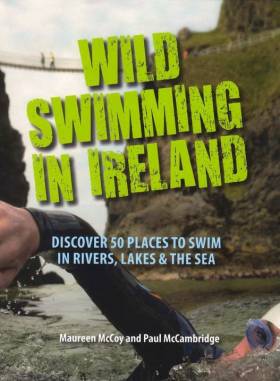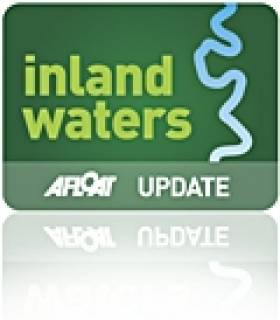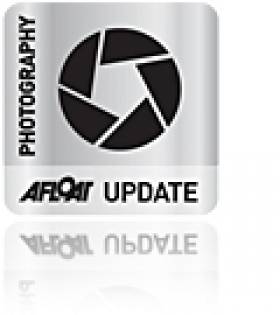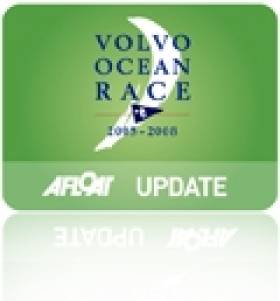Displaying items by tag: photography
German Photographer Soren Hese Wins Yacht Racing Image Award
134 photographers spanning 27 countries submitted a picture for the Mirabaud Yacht Racing Image award 2017.
Soren Hese (GER) wins the main prize (above), whilst the delegates from the Yacht Racing Forum and World Sailing's annual conference elected Tomas Moya.
The international jury decided to honour Hese and his surprising picture taken from a drone during the 5O5 German championships. Based in Berlin, Hese has been working as an independent photographer since 1990. “I am very proud because this contest is the absolute reference in yacht racing photography “, he said. “I took this picture using a time-motion-stack imaging concept, capturing the image basically as a time series from a quadrocopter. I found its graphical structure very interesting and also story telling, and so decided to submit it to the contest. I am very touched by this victory, against all those prestigious photographers. There were also so many major international events this year that I am really surprised to have won.”
Zita Kovacs (HUN) obtained most votes on the social networks and wins the Public Award.
Waterways Ireland Archive Exhibition in Mullingar Celebrates 200 Years of the Royal Canal
#RoyalCanal - A forthcoming exhibition in Mullingar Library will celebrate 200 years of the Royal Canal through images and drawings from the Waterways Ireland archive.
Featuring a selection of images from the archive and from the Ruth Delany and Ian Bath Collections, the exhibition reveals the fascinating history of the Royal Canal over the past 200 years.
The photographs on display are a snapshot of the long history of the inland waterway but they are also testament to the work and efforts of individuals like Ruth Delany and Ian Bath to personally document its deterioration from the 1970s onwards and to highlight an awareness of the canal during the years of lobbying for support for its restoration.
The exhibition will be on display in Mullingar Library from next Monday 27 November to Friday 8 December during library opening hours:
Monday 10am to 5:30pm
Tuesday 10am to 8pm
Wednesday 11am to 5.30pm
Thursday 10am to 8pm
Friday 10am to 5pm
Saturday 10am to 1.30pm
Marine Institute Researcher Runner-Up In EU Photo Contest
#MarinePhoto - A marine researcher at the Marine Institute was recently runner-up in the EU-funded CommBeBiz photography competition with the theme of ‘New Perspectives on the Bio-Economy’.
Tomasz Szumski captured the prize-winning shot ‘Micro Island - Connemara’ when he provided technical and photographic support to Dr Jenny Ronan during sampling and subsampling of the seaweed for the AsMARA project along the Connemara coastline.
AsMARA (arsenic in marine macro algae) is a three-year project funded by the Department of Agriculture, Food and Marine’s Food Institutional Research Measure (FIRM), and is a marine science collaboration between the Marine Institute involving Dr Evin McGovern and NUI Galway’s Dr Dagmar Stengel to research seaweeds found in Ireland and assess their implications for commercial uses.
Over 100 scientists from across nine European countries entered the photo contest to highlight aspects of their research that supports the development of the European bio-economy to reduce the EU’s dependency on fossil resources, and contribute to producing environmentally friendly renewable products that meet our needs for food, materials and energy.
With the ocean representing over 70% of the earth’s surface, living marine resources such as seaweeds can provide a significant contribution to food, energy and bio-based products.
“In Ireland, there is a long tradition of using seaweeds and an increasing international interest in developing this resource into a range of products such as foods, fertilisers, animal feed and cosmetics,” said Szumski.
Through this research, the Marine Institute says it is evaluating the variability in the levels of organic and inorganic forms of arsenic in commercially harvested seaweed species to ensure their safety for such uses as food supplements and cosmetic components. The information generated supports innovation of blue biotechnologies, as well as assisting policy makers in risk management for consumer protection.
The winning photos in the 2017 CommBeBiz photo competition are being exhibited online on European project websites including CommBeBiz and the BioStep Project, as well as in Horizon Magazine, the European Commission’s research and innovation journal.
Entries for the 2018 edition will open on Monday 1 May.
New Book Celebrates Wild Swimming In Ireland
#WildSwimming - Wild Swimming in Ireland is a new book of photography showcasing some of the most breathtaking locations to take a dip around the island, as the Banbridge Leader reports.
Compiled by open sea swimmer Maureen McCoy and photographer Paul McCambridge – a noted open-water swimmer himself – the book, which features 50 spots for wild swimming, is hoped to be just the beginning of a series highlighting the charms and even therapeutic qualities of swimming beyond the usual beaches and pools.
From seaside spots like beneath the Carrick-a-Rede rope bridge in Co Antrim to the islands of Lough Erne and quiet countryside river stretches, McCoy and McCambridge hope the book provides inspiration for prospective wild bathers of every stripe and swimming ability.
The Banbridge Leader has more on the story HERE.
Brian Carlin In The Running For Yacht Racing Image of the Year Award
#VOR - Ireland's own on-board reporter in the 2014-15 Volvo Ocean Race is among the race nominations for the Mirabaud Yacht Racing Image of the Year Award.
The Kerry marine photographer's shot of the damaged hull of Team Vestas Wind's yacht as it lay grounded in the middle of the Indian Ocean a year ago is one of 10 from the round-the-world yachting challenge selected for the shortlist of the prestigious award.
The official Volvo Ocean Race website has more selections available for public vote until Monday 30 November.
Winners Announced In Waterways Ireland Heritage Plan Art & Photographic Competition
#InlandWaters - Paul Moore from Tullamore took home the Over 18s award in the Waterways Ireland Heritage Plan Art and Photographic Competition for his breathtaking picture of Bolands Lock house on the Grand Canal taken on a frosty winter morning.
Moore's photo was chosen earlier this month after reviewing a very strong group of entries, from which Under 18 award winner Christoph Wagner from Cologne was also selected for his picture of Clonmacnoise from the River Shannon.
Both winners received an iPad Air tablet. To view their winning photos, visit the Facebook gallery HERE.
#InlandWaters - Waterways Ireland is seeking contributions from the public on what they think best fulfils the theme 'Waterways Heritage'.
Participants of all ages are invited to enter the Heritage Art/Photographic Competition to be in with a chance to win an iPad Air.
Heritage of the inland waterways can include monuments, archaeological objects, heritage objects, architectural heritage, flora, fauna, wildlife habitats, landscapes and geology.
Entries should be of the waterways under the jurisdiction of Waterways Ireland, which include the Shannon Navigation, Erne System and Shannon-Erne Waterway; the Lower Bann Navigation; the Barrow Navigation; the Royal and Grand Canals; and the Ulster Canal (Upper Lough Erne to Clones).
The judges will select an entry (photograph, painting, sculpture, etc) which best captures the heritage of the inland waterways.
Entries will be divided into two categories: 18 years and over and under 18s. A prize of an iPad Air tablet will be awarded to the winner of each category.
Take the summer to prepare your entry and submit before the closing date for the competition, 30 September 2015. Terms and Conditions apply and details are included in the entry form HERE.
For further information and competition rules contact Sabine Browne of Waterways Ireland at 061 922 141 or [email protected]
#RNLI - Jack Lowe has loved the RNLI since he was a little boy. He became a member of Storm Force, the charity’s club for children, at the age of eight – about the same time he picked up his first camera.
Now, he’s bringing his two passions together in a unique undertaking: The Lifeboat Station Project.
Jack plans to visit all 237 RNLI lifeboat stations in Britain and Ireland, photographing the view from each station along with the crew and coxswain/senior helm using wet plate collodion, a Victorian process that allows him to record stunning images on glass.
The ambitious project is likely to take three to five years to complete. Jack, who lives in Newcastle upon Tyne, travels in 'Neena' — a decommissioned NHS ambulance purchased on eBay and converted into a mobile darkroom.
Grandson of Dad’s Army actor Arthur Lowe, also an avid RNLI supporter, Jack explains: "My early childhood was spent on a Victorian schooner in Ramsgate harbour and on the Thames. My Dad is an experienced seafarer and introduced me to the wonders of lifeboats – these wonderful, powerful pieces of kit designed for heroic, lifesaving missions on stormy seas.
"From an early age, I knew that I wanted to be either a photographer or a lifeboat crew member when I grew up. Now I’m following my heart and uniting the two dreams.
"I’m using a photographic technique developed in the 1850s, around the time that the RNLI was incorporated under Royal Charter. The photographs are made directly onto glass plates known as 'ambrotypes'." Jack has already documented all 15 stations on the East Anglian coast.
“The project now enjoys an incredible extra dimension as everyone is so involved and engaged with it," he says. "The coxswain and crew can step into the ambulance and watch a portrait of themselves developing. They are entranced, often rendered speechless and sometimes moved to tears!"
Jack began drawing up plans for the project over two years ago. He says he has always had an interest in the history of photography.
"The word photography means drawing with light and that is how I think about it still. I adore photography in this very raw, basic form — light falling on chemicals. It really is magical – the final image is always a surprise, even to me."
He adds: "There’s a small global community of people interested in using these old techniques. Everyone works in their own way – and you’re always learning as you go along.
"The chemicals are the original formulae from the 1800s. It took me a long time to figure out the logistics of transporting and storing glass plates. I have a box made for each station that holds 10 sheets of 10x12” glass. Then when I get them back to Newcastle I scan them, varnish them and then place them into storage."
It’s a real labour of love, even for a dedicated RNLI fan, but Jack always looks forward to his next station visit.
Follow Jack Lowe’s RNLI photographic mission on Facebook, on Twitter or on the project’s dedicated site.
New Photo Exhibition Charts Arctic Circle Adventure
#Arctic - The visual fruits of last summer's epic North Of Disko expedition from Galway Bay to Greenland and the Arctic will be on show at a new exhibition in Dublin.
TheJournal.ie has a sample of some of Daragh Muldowney's photographs from the voyage that comprise the new gallery show at The Copper House, off Synge Street in Portobello, from this Wednesday 1 October till Friday 7 November.
Muldowney's stunning shots take in all the majestic sights he and his fellow adventurers were treated to on their 1,600-mile voyage across the North Atlantic to Aasiaat in western Greenland, travelling north along the Baffin Bay coast to Upernavik, inside the Arctic Circle.
As previously reported on Afloat.ie, from there a team of four set out on an unsupported sea kayak expedition to explore the region's fjords and ice fields, followed on land by a team of climbers tackling some of the area's frozen peaks.
Also launching at Muldownney's exhibition this week is his book of photographs from the voyage, Out of Thin Air.
TheJournal.ie has more on the story HERE.
Irish Photographer Brian Carlin Joins VOR Media Team For 'World's Most Extreme Yacht Race'
#VOR - It's been a whirlwind few weeks for Team Vestas Wind, the seventh and final entry in the next Volvo Ocean Race, which sets sail around the world in just 18 days' time.
And it's been no less hectic for the team's onboard reporter, experienced Irish sailing photographer and filmmaker (and frequent Afloat contributor) Brian Carlin, who writes here about his surprising selection for the race's 'dark horse' team and recent Leg 0 winners...
It was something I really wanted and the opportunity came. I had applied just like the other 2,500 people in February 2012 for a job as onboard reporter for the Volvo Ocean Race. It doesn't come bigger and better than this.
I patiently waited for almost 18 months with little to no news on my progress only to say I made it into the top 5% of candidates. It's not just about being good at your job (photos, filming, writing), it's important that you can are motivated to work the toughest job on the planet (as it was described by VOR, and I can confirm it's far from easy). It' about being good with people, too. You need the right attitude.
Pretty much out of the blue it all unfolded. I had a call from Chris Nicholson mid July to see if I was interesting in joining his late entry team. I think I might have said "Of course" before he finished asking the question. I was one of four onboard reporters he was interviewing. One Skype call later, and interview complete. I had to wait four days for a reply. I got the reply: a thumbs up from the skipper.
The team was being selected. I had to keep it quiet; not easy at all. I had little time, in fact I recall having to sort my entire life out in six days before I was flying to Southampton to start work with Team Vestas Wind.
We had at least three weeks in Green Marine, Southampton. We put the boat together, started the gym programme (I was so far from being fit) and I began to get my head around the fact I was sailing around the world in the most extreme race there is with the best off-shore sailors you can find on this planet. I was too busy to stop and process it all. Not an overwhelming feeling my any means; I had a lot on and a lot to do.
We did some testing on the Solent and had a photo shoot with the helicopter and TV from Volvo. It was then on 31 August when we docked out for the last time in UK waters. VOR had set a minimum 2,000-mile qualifier for all teams. We sailed into Alicante on 8 September just in time for the cut-off window.
It was a nice change from rain to sun. We didn't have much time off, really; it was a case of getting ourselves and the boat ready for Leg 0, the trail test and practice for the race start. I had all my comms checks, onboard live feeds, etc. The 470-mile round trip from Alicante to Palma, Majorca took us under two days. It was fast and pretty damn hot below decks.
Now I'm sitting in the team base where this morning we took the boat out of the water for a mandatory period of 14 days. This time will be spent doing fleet-wide changes and tweaks. All the boats will have new generation cameras fitted also.
So for now I have a couple of days off. I plan on sleeping as much as I can. It will be later this week that I start prepping 24 days' worth of food and getting my camera cleaned and serviced. The race is coming around so fast. I wish I had more time.
Still looking for the time to process. I'm about to do the world's most extreme yacht race. It's still not sinking in. Maybe it's a good thing.































































